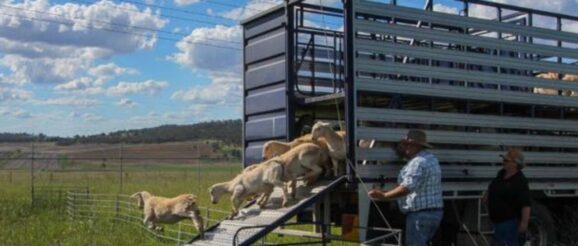Warwick solar grazing innovation singled out for success | Warwick Daily News

The “cost-saving” and fruitful nature of the Warwick UQ solar farm’s agistment has been heralded by a national report on Australian agri-solar farming.
The Clean Energy Council released their Australian Guide To Agrisolar For Large-scale Solar on Thursday, where both the Sladevale and Gatton UQ solar farms were highlighted for successful case studies agisting sheep.
Notable in the report were both farm’s safety and cost-saving factors.
“The greatest advantage by far has been the security provided by the solar farm perimeter fence,” the guide wrote.
“This secure perimeter prevents death and injury caused by wild dog attacks to the livestock, a prevalent issue in Queensland.
“In fact, stock levels (in Gatton) were increased in the fixed-tilt array paddocks over Christmas 2019 due to the safety provided by the fences and is now considered the best paddock on site.”
The Gatton farm notably “eradicated” the use of mowing services thanks to the sheep, with Warwick expected to follow suit.
“Prior to the introduction of the sheep at Gatton, mowing was contractually required once a quarter, which was costly and led to a significant amount of infrastructure damage, including broken panels,” the report read.
“Even with the purchase of yard equipment, installation of water access and partition fencing, the costs saved from mowing are approximately $100,000 per year.
“There have been a few damaged panels in the fixed-tilt array paddocks where a sheep may have pushed its way through the small gap between panel and ground, but any damage caused by the sheep has been minimal compared to the damage caused from mowing.”
The report also revealed other solar grazing farms like the Parkes Solar Farm bred high wool quality even during drought conditions.
Warwick joins 15 other solar grazing farms across Australia with the innovative partnership between graziers and solar farmers believed to have originally begun in England a decade ago.
The report also highlighted future opportunities to incorporate viticulture, horticulture and aquaculture into Australian solar farms.
